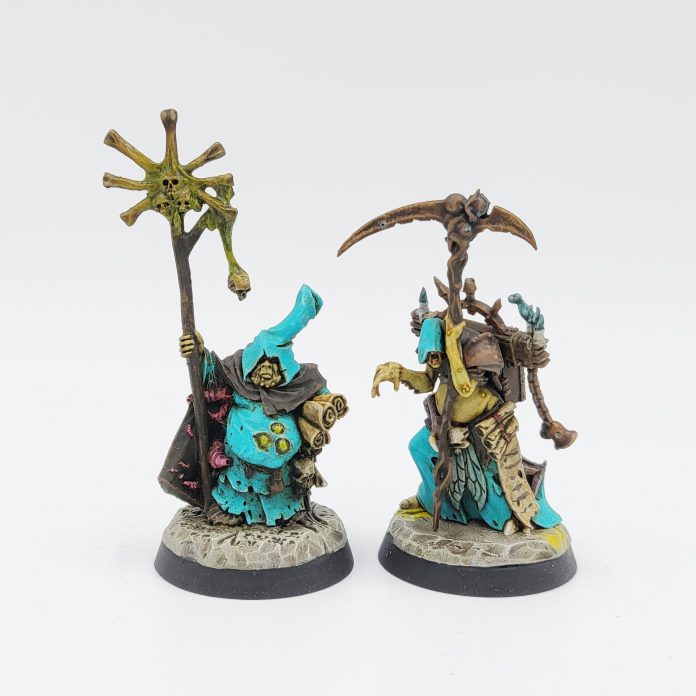Many thanks to Game Workshop for providing a review copy of the new Sorcerer, as well as to my tendencies to hoard and not finish projects for providing the other.
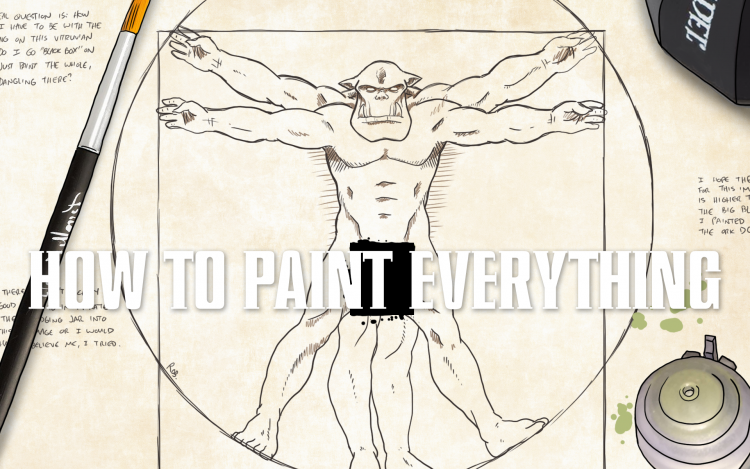
What do you do when faced with roughly five thousand points of Nurgle across two game systems? Come up with a reasonably quick and repeatable unified scheme that lets you knock them out in a reasonable amount of time.
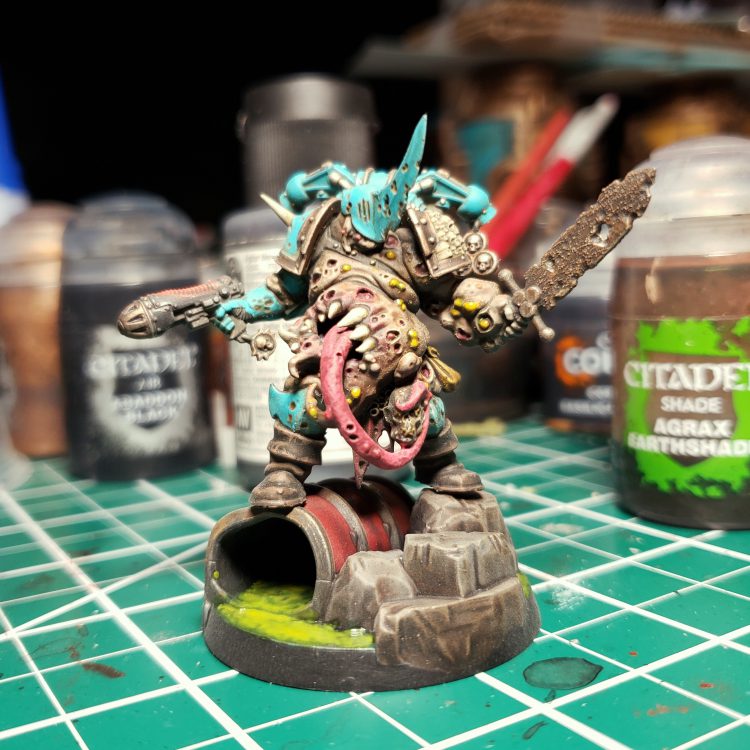
I’ve been OBSESSESED with Golden brand’s High Flow Acrylics Teal for quite a while now. It features heavily in my sector mechanicus terrain, and I decided that it would be the basis for my Rotchosen armies. In general, the colors are riffing on the gross-out toys I loved in the early 90’s (specifically the Toxic Crusaders). While Teal is the main event, I also wanted prominent use of bright pinks, nuclear yellow-greens, and occasional splashes of red (see the plasma gun above).
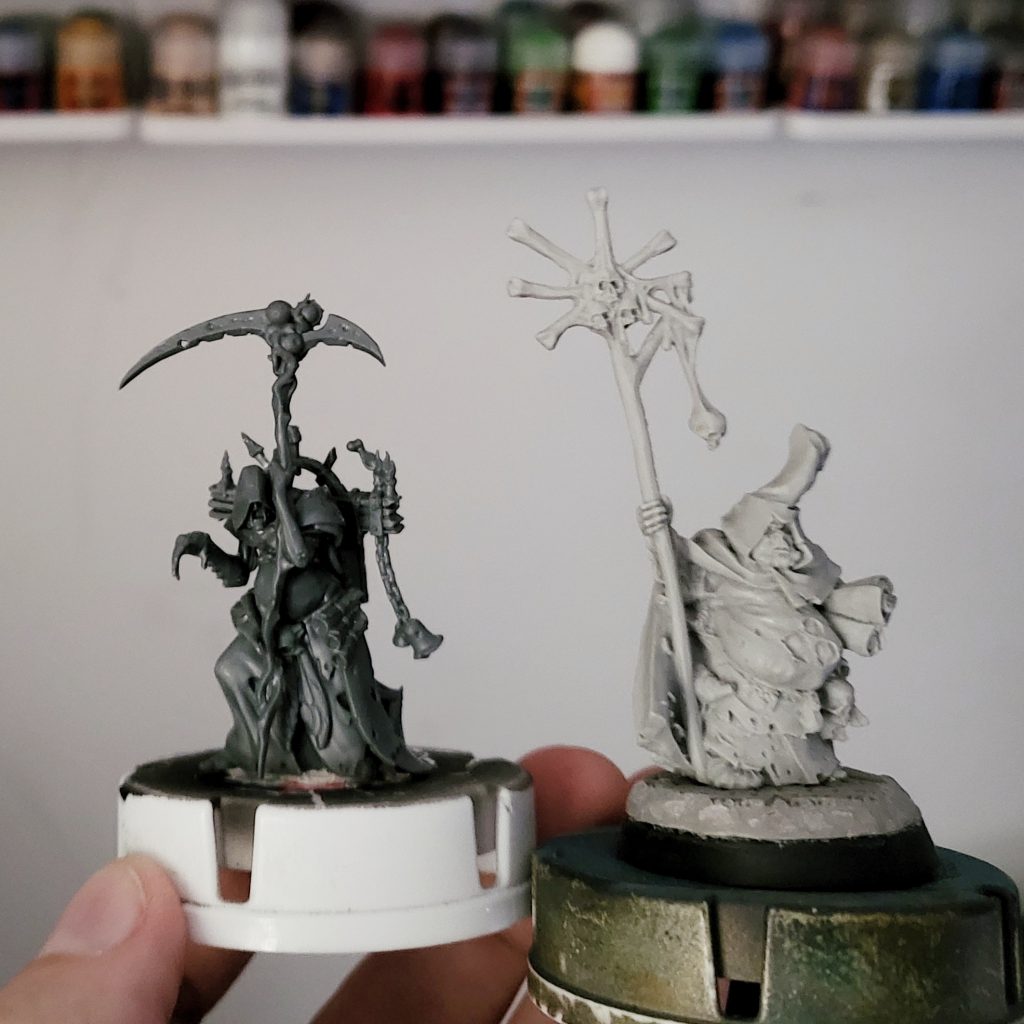
Golden Teal is an extremely vibrant blue, so taking the edge off of it and adding a bit of variation is crucial here. The crux of the paint scheme is applying teal, edge highlighting / drybrushing with a mix of teal and white, and coating the model in Ammo by Mig Winter Streaking Grime. This process is applicable to plenty of other color schemes (including green!) so if you are staring at a bunch of gray Death Guard or Blightkings… give it a shot!

First, I start by priming black and going for a strong zenithal highlight. As I lean on a bunch of contrast paints, a zenithal highlight is helpful (but not required here). The teal works best over a light prime, so any white primer is solid. Obviously, the main color is Golden High Flow Acrylic Teal. If you’ve never used their high flow paints before, keep in mind that there is a solid amount of drying retarder in the paint, which means a MUCH longer drying time. Don’t handle any painted bits for a while! Like I mentioned before, I mix up some teal and white to add a bit of definition, with some messy highlights and drybrushing. If you want to stick with GW paints, Temple Guard and the colors in that orbit are great.
Brown leather is basecoated with Contrast Wyldwood, scratchily highlighted with Bloodreaver Flesh & Gorthor Brown, and knocked down a tiny bit with a thin coat of Seraphim Sepia. Bone is picked out with Skeleton Horde, and highlighted with Ushabti Bone then Pallid Wytch Flesh. Worms (and tentacles in other models) are basecoated with Pink Horror, washed with Druchi Violet, and highlighted with Emperor’s Children. Plague smoke and small fly wings are washed with a thin coat of Coelia Greenshade and drybrushed with Pallid Wytch Flesh. Candles get a basecoat of Apothecary White, and you can drybrush them with the previous smoke step. Parchment is based with skeleton horde, drybrushed with Flayed One Flesh and Pallid Wytch Flesh, and given a wash of Seraphim Sepia to knock it down. After the grime wash I tend to go back with a bit of Pallid Wytch to give the edges more definition.

Over on the new sorcerer, dark woods get a base of Dryad bark and a highlight of Bloodreaver flesh, while lighter wood gets Gorthor and Baneblade. Bronzes are basecoated with Balthasar Gold, given a TINY bit of verdigris wash in recesses, and washed into oblivion with Agrax Earthshade. A drybrush / highlight of Brass scorpion will get the metals ready for the grime. The sorcerer had some sort of jar attached to his hip, and without someone on the internet to steal ideas from I based it black, highlighted Skavenblight Dinge, painted the string around it with Wazdakka Red, and painted the lid with the previous Bronze recipe.
The skin on these guys is pretty easy: base with Plaguebearer Flesh, wash with Reikland Fleshshare and Druchii Violet to make areas appear grody or bruised, highlight with Ogryn Camo. I highlighted the pustules Dorn Yellow and the big boils / goop around the skull on the old sorc got a dingy green in preparation for Nurgle’s Rot at the end. For pale nurglebuds, I base Pallid Wytch, wash with Reikland and Druchii Violet to add grossness & definition, and highlight or drybrush back up with Pallid Wytch.
If you are using this for other Nurgle dudes, here’s a bonus crusty steel recipe: basecoat with Typhus Corrosion, wash with thinned rust color, lightly drybrush silver and highlight main edges with silver, wash with grime until suitably unpleasant.
GRIME TIME
Glosscoat the model and just cover it head to toe in Winter Streaking Grime. This enamel wash does two things to the teal: 1. it makes it… uhh… grimy… but 2. it also adds a nice filter. This softens the blue and makes it look much more appropriate. The filter should be reasonably consistent, but you can be choosy about removing the grime to really make your army look stanky. I find that exclusively scrubbing leaves a better finish than using thinner, but definitely experiment and see what you prefer. Once you are happy with cleanup, let it sit for 24-48 hours, seal it in with a coat of varnish, and tidy things up! For the heroes I like to use the enamel more for the filter than the grime and go VERY aggressive with cleaning.
I am still undecided on an overall basing scheme for the army, but I’ve got these guys on dingy ruins! I basecoated with Vallejo Cold Grey, washed with Agrax Earthshade & Athonian Camoshade, then drybrushed with Ushabti Bone then Pallid Wytch Flesh.
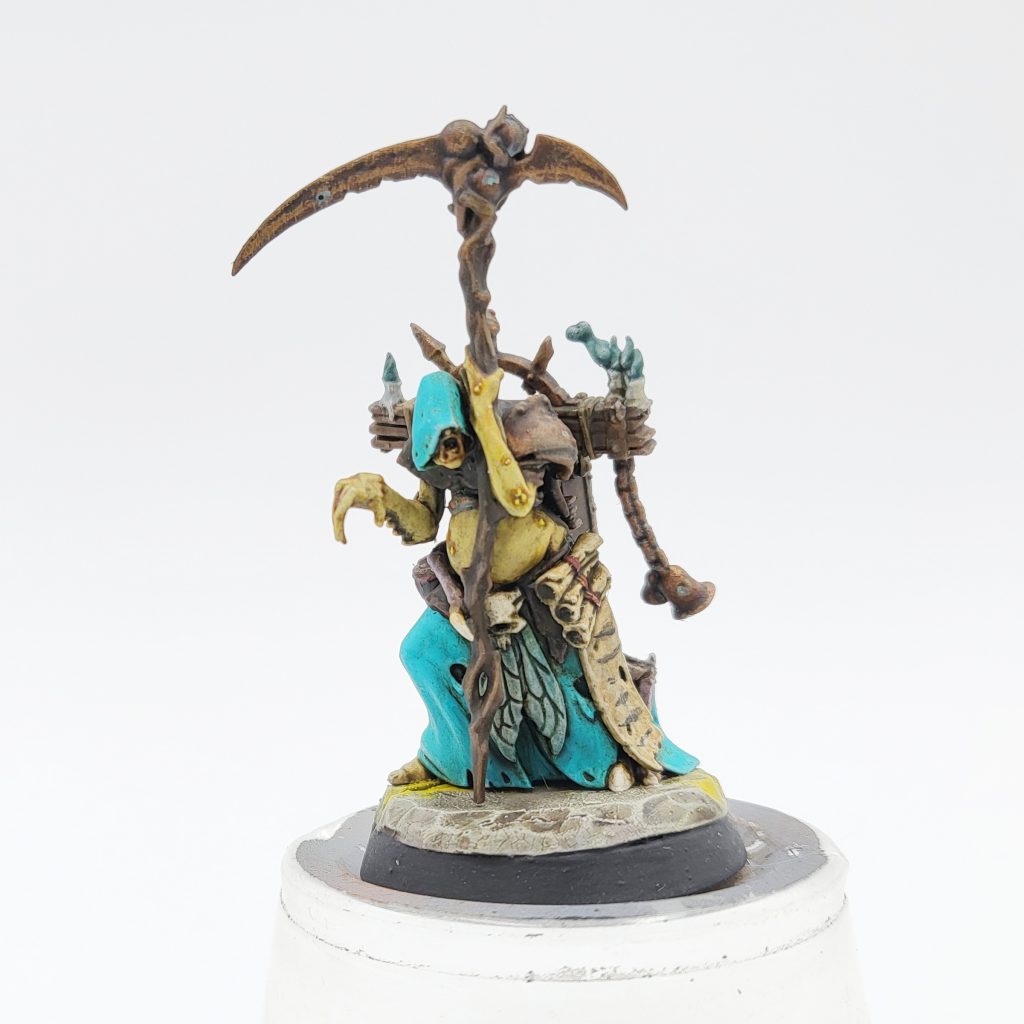
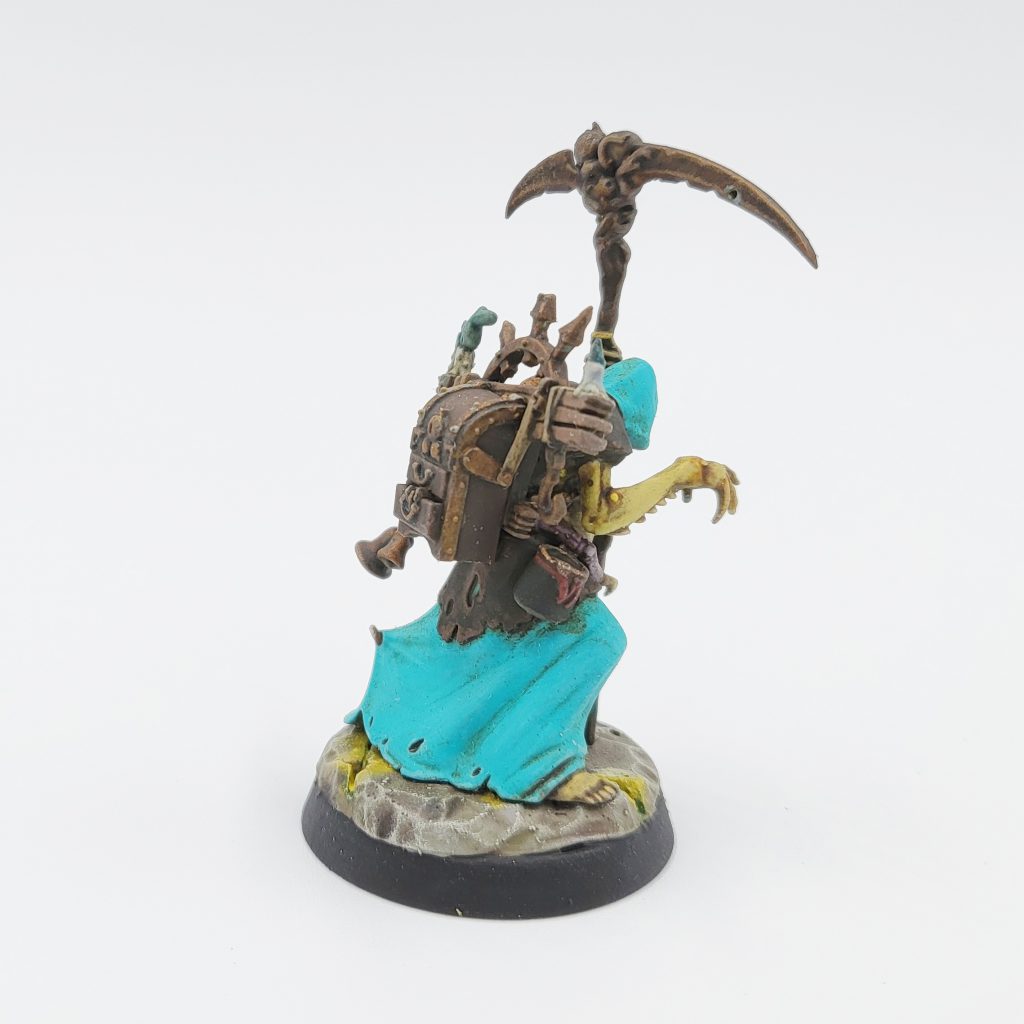

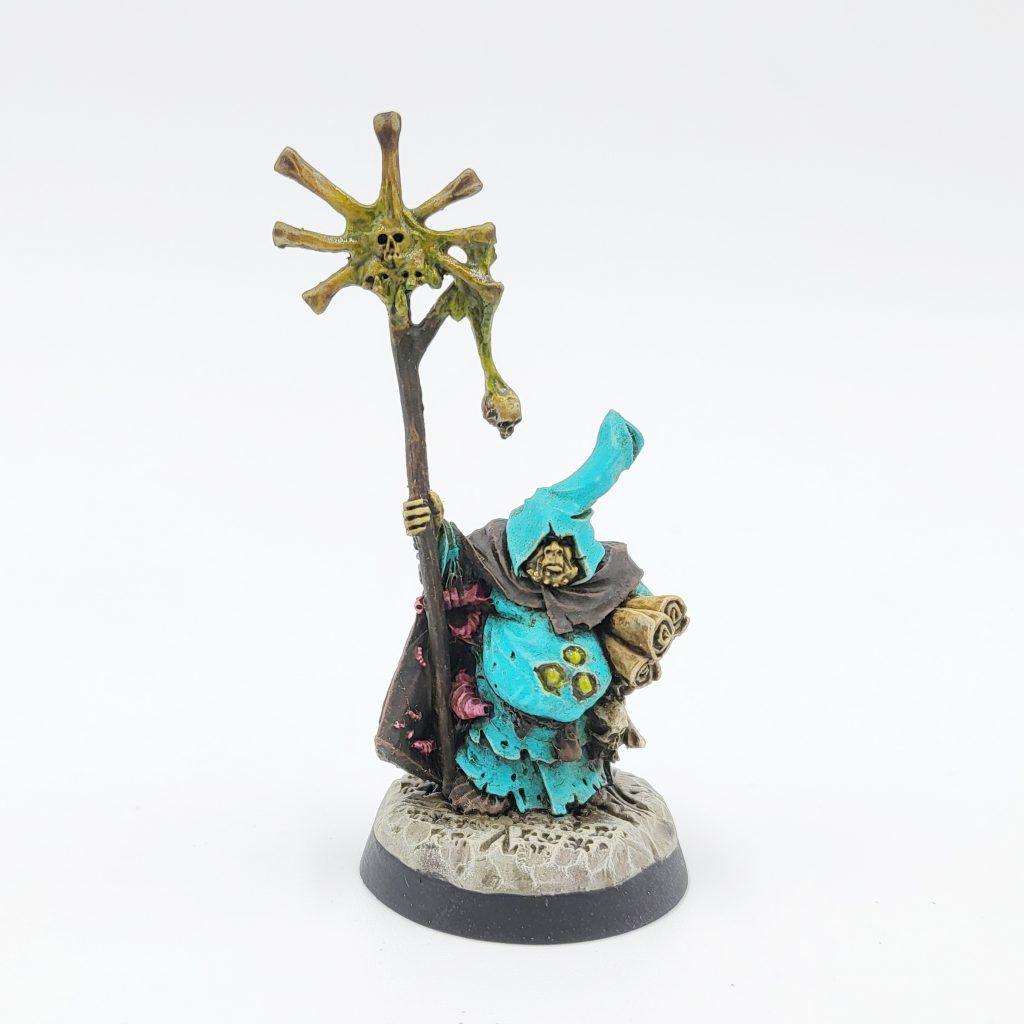

In terms of the new sorcerer model itself, I love the final product, but it wasn’t enjoyable to put together. The scythe arm has a strange join that I opted to convert a bit for a little more stability (and creepy hunching).
Shout out to my clubmate Colin’s streaking grime-centric Maggotkin / Death Guard scheme, which gave me the inspiration to tackle it in Teal!
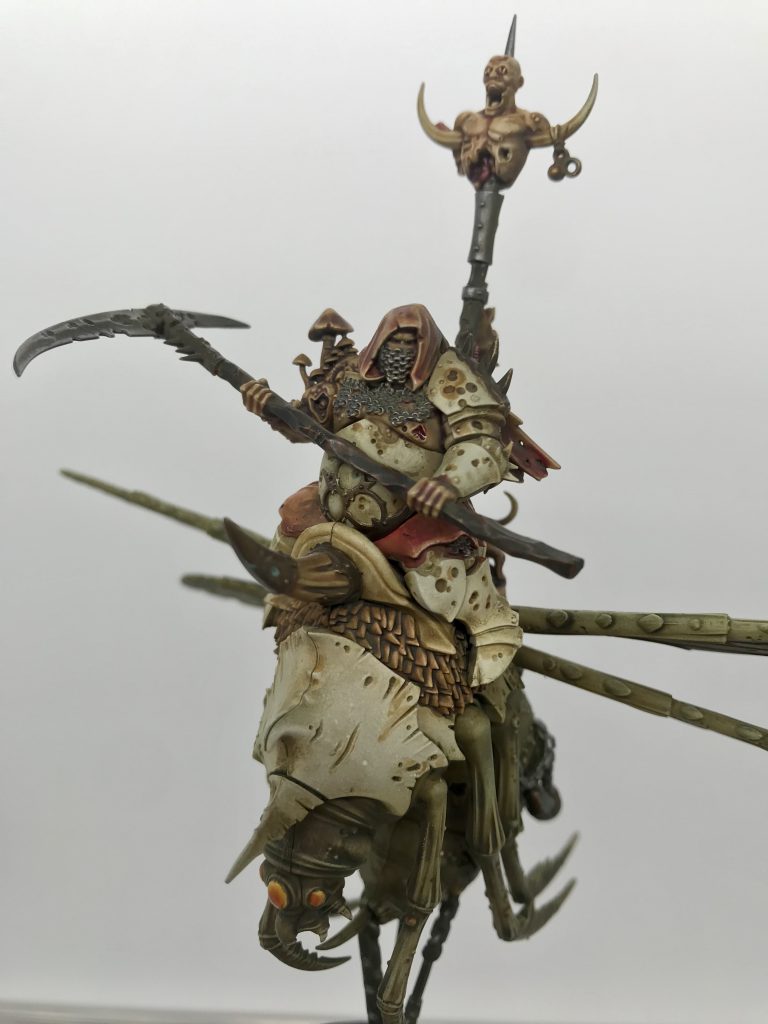
Have any questions or comments? Comment below or email us at contact@goonhammer.com.
